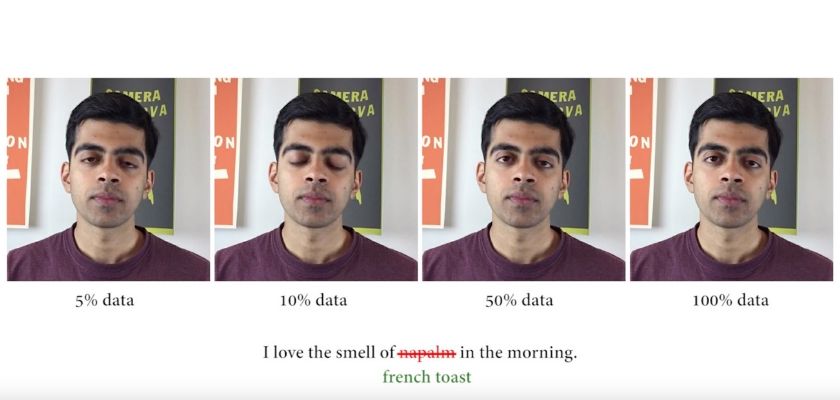

While victims of these deepfakes can likely find redress through civil defamation suits for damages, the criminal liability of the deepfake creators would appear limited to Minnesota’s criminal defamation statute. By prohibiting only two uses of deepfake technology in the law, a door is left open for someone to create a deepfake of a victim spewing hateful rhetoric or committing heinous, non-sexual acts. But regardless of the false imagery depicted by the deepfake, the image association makes the harm to one’s reputation much greater than mere spoken or written words by a third party. Deepfake technology is indisputably damaging when used to create sexually explicit images of someone or to influence an election. The image association with a deepfake understandably creates greater harm, as recollection of the deepfake imagery can be difficult for viewers to dissociate from the victim.Īlmost everyone can agree that the Minnesota deepfake law was needed legislation, as evidenced by the bill passing the House in a 127-0 vote. Deepfakes, on the other hand, make viewers believe the victim is making the statement or committing the act themselves. Other methods of defamation can be harmful, but typically consist of publications or statements made by a third party about a victim. It is completely logical for the use of deepfakes to carry harsher penalties than other methods of defamation. The defamation statute allows up to one year of imprisonment, a fine of up to $3,000, or both for whoever “communicates any false and defamatory matter to a third person without the consent of the person defamed”. These two deepfake uses appear to elevate the penalties of Minnesota’s criminal defamation statute. Criminal penalties for use of deepfake technology to influence an election vary depending on whether it is a repeat violation, but can result in up to five years imprisonment, a fine of up to $10,000, or both. Additionally, criminal penalties can consist of up to three years imprisonment, a fine of up to $5,000, or both. For creating and disseminating a sexual deepfake, damages can include general and special damages, profit gained from the deepfake, a civil penalty awarded to the plaintiff in the amount of $100,000, and attorney fees. The law imposes severe penalties for each. Specifically, the Minnesota law imposes civil and criminal liability for the “nonconsensual dissemination of a deep fake depicting intimate parts or sexual acts” and criminal liability for the “use of deep fake technology to influence an election”. Laws vary by state, with some allowing criminal charges in certain situations, while others allow a civil action. In the absence of any federal law, Minnesota joins a handful of states that have enacted legislation to combat deepfakes. On August 1 st, 2023, a deepfake law became effective in Minnesota. However, some view these laws as a violation of First Amendment rights and as being unnecessary due to incentives for private companies to monitor their sites for misinformation. Minnesota is an example of a state that has recently enacted deepfake law. Further, in an increasingly digital world, deepfakes can be used to rapidly disseminate misinformation and cause irreparable harm to someone’s reputation. The advancement of AI allows unskilled individuals to quickly create incredibly lifelike fake media.

Deepfakes use machine learning and AI to essentially photoshop individuals into images and videos. That said, my son wants me to show him how do this because he has to turn in video of himself doing a speech for school.While rapidly advancing artificial intelligence (AI) is certain to elevate technology and human efficiency, AI also poses several threats. I’m not sure how I would use this technology myself because it doesn’t look quite right. I’m a bit mesmerized when I watch the video because I look like a super villain.

This deep fake took me about half an hour to do. This allowed me to create a deep fake video of myself. I then created an account on D-ID and uploaded a photo of myself along with the mp3 file generated by ElevenLabs. Next, I copied the text generated by OpenAI into the Speech Synthesis feature, which produced an mp3 file that I downloaded.ģ. I utilized ElevenLabs' Speech Synthesis feature to create a clone of my own voice by providing a one-minute audio sample. In this example, I asked ChatGPT to “write a two minute speech on the opportunity and dangers of artificial intelligence in the voice of Steve Jobs,” and this is what it generated:Ģ. If you need to create a deep fake of yourself, here’s how in 3 simple steps:ġ.


 0 kommentar(er)
0 kommentar(er)
